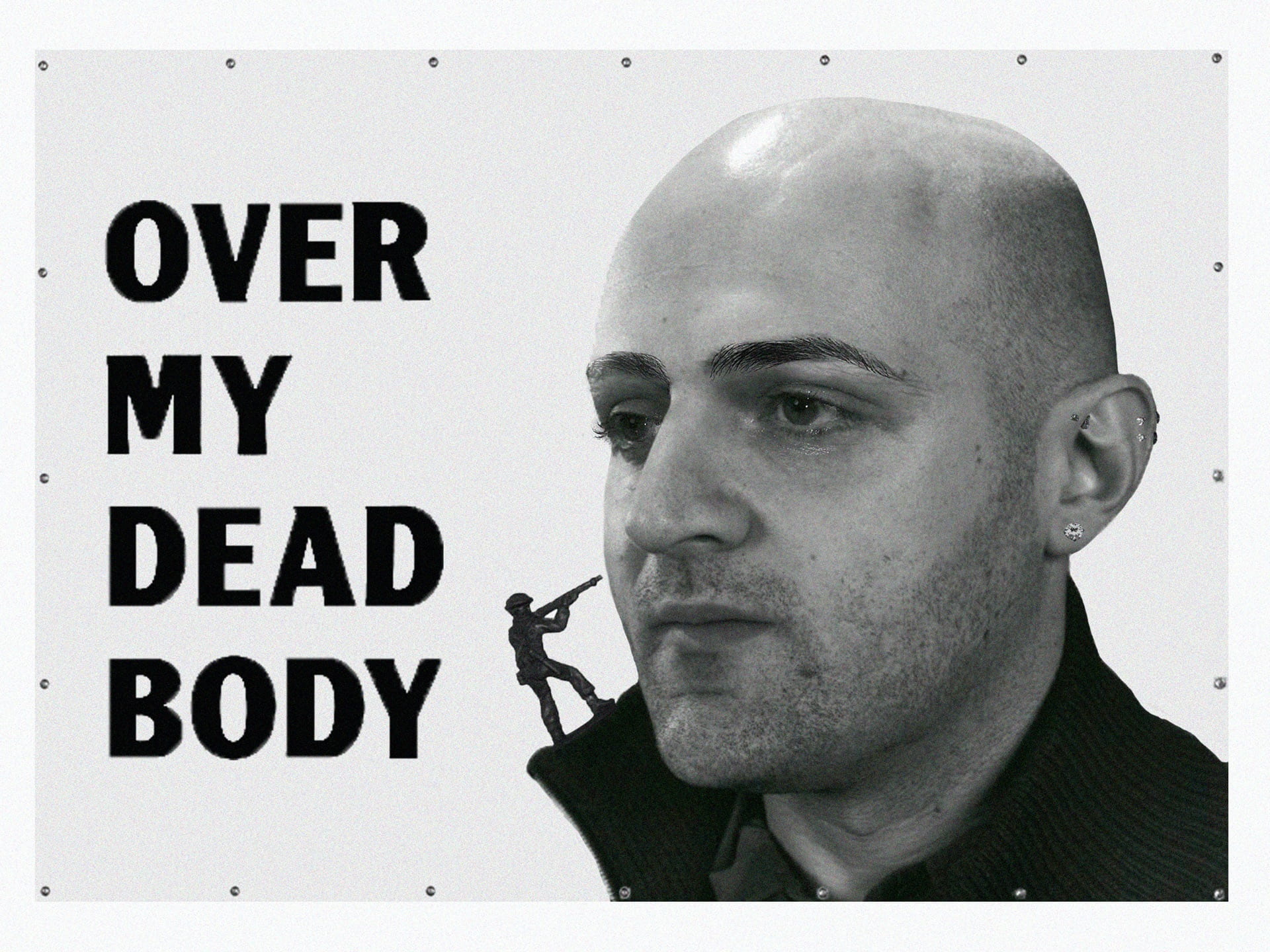Brainstorming and Data Collection:
Once given this task I knew that I was mostly interested in exploring the works of Mona Hatoum, as she is one of my favorite artists who explores the themes of exile, refuge and identity. I decided in order to succeed in this task, I should consider finding a fashion designer that -similar to Hatoum- creates surrealist sculptural work that also explores the themes of exile, refuge and identity. I thought of a couple names but I eventually settled on Hussein Chalayan.
Mona Hatoum:
Mona Hatoum is a Palestinian sculptor, performance, and installation artist whose parents had to leave Palestine and seek refuge in Beirut due to political unrest. She ended up studying art in Lebanon, however, she felt confined by the strict rules of British art schools which lead her to rebel and re-align boundaries. Hattoum’s work gained its notoriety for she was one of the first to work with different media such as metal, light, glass, and bodily material such as hair in order to rely her concepts. She began to narrate her personal experience in her art by creating videos and performances that focus on the body as a way to make political statements about dislocation. She later on shifted from politically driven performance to installation and sculpture.
Hussein Chalayan:
Hussein Chalayan grew up in Cyprus, and pursued his fashion design education in Central Saint Martins in London. Growing up around war has lead Hussein Chalayan to find inspiration in airplanes, technology, and engineering alongside the exploration of identity, transience, and space. Since the start of his career, Chalayan has demonstrated inventive techniques in his making. For his 1993 graduation collection from CSM; he buried his clothing with iron fillings, and dug it up once it began to decompose. His most notable works include garments resembling and incorporating the mechanisms of airplane parts, transformable garments that shape-shifted through multiple silhouettes, and a living room set that assemble into garments exploring the theme of refuge.
References:
- https://www.theartstory.org/artist/hatoum-mona/life-and-legacy/
- https://www.guggenheim.org/artwork/artist/mona-hatoum
- https://www-bloomsburyfashioncentral-com.libproxy.newschool.edu/products/fashion-photography-archive/article/hussein-chalayan
Possible Ideas and Sketches:
I found that the best way for me to zone in my ideas is to pick out my favorite works from the artists and designers, this way I am able to zone in the best way to embody both Hatoum and Chalayan.
Looking at the works that I have collected, I found that both artists exhibit an architectural style in which they explore the boundaries of the body. Both artists and designers also explore a multitude of unconventional media, and have performative aspects to their work.
Preliminary Iterations:
Once I started working on this project, I realized that I strongly appreciated Hatoum’s performative work so I decided to do my shoot outside instead of in a studio inspired by her Roadworks piece. I created a headpiece that borrows from the shape of the installation in Under Siege , and uses mirrors as Chalayan does in Mirror Heads.
Before I continued editing, I received feedback that I took this too far and that it would be better to just zone into a specific piece, and to make sure that the artist/designer I’m embodying is actually distinguishable. So I decided to work with Hatoum’s most famous photograph Over My Dead Body, and to photoshop my face in a manner that embodies Chalayan’s facial features.
Over My Dead Body is a portrait of Hussein Chalayan created by Mona Hatoum. On the collar of Chalayan’s shirt perches a toy soldier. A sense of humor enlivens the photograph, as Chalayan’s glare away from the soldier make oppression and war tiny and laughable matters. He neglects the soldier’s presence in a way one might ignore the presence of a small fly. Hatoum attempts to interpose Chalayan’s body as a metaphor for the conditions of those who experienced war and exile, much like her and him. Both Hatoum and Chalayan live on the unstable ground between two cultures for they involuntarily become a part of a new culture, due to political instability in their home countries. Through Hatoum’s phrase “over my dead body”, Chalayan is directly conveyed in defiance of such political situations. In addition, Hatoum’s choice to place Chalayan as the largest figure in the foreground of the photograph standing in front of a solid background with no other distractions further emphasizes on his body occupying a physical space, one that does not give space for other entities. The scale shift between the body and the symbol of war leads the viewer to a realization of the forces that are at play, she orchestrates a literal face-off. Through the personal testaments of both the artist and designer, the ironic mood of the photograph, and the empathy with others in exile, the artwork successfully confronts the reality of trauma.
